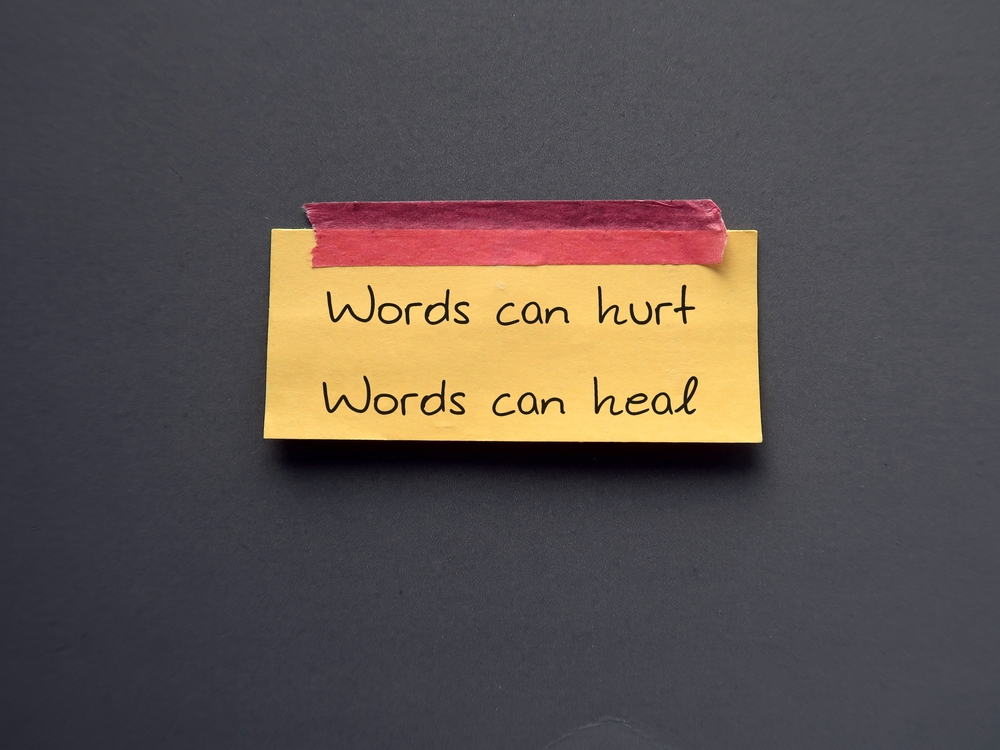
Communication, whether or not public or personal, performs a major position in contributing to stigma (Escandon, 2024). Specifically, the media and social media strongly affect neighborhood beliefs, information, and attitudes in the direction of psychological well being points, suicide, and alcohol and different drug (AOD) use (Ross et al., 2019). In actual fact, language is a life-or-death matter; media and social media depictions of suicide can enhance the chance of additional suicidal behaviours and deaths (Niederkrotenthaler et al., 2020).
Although there’s loads of proof exhibiting that language issues, there nonetheless appears to be no clear settlement on what phrases we ought to be utilizing. For instance, in a weblog printed by Huggett in 2020 researchers discovered that when folks with lived expertise of suicide had been surveyed, their opinions had been surprisingly blended on the phrase ‘dedicated suicide’ – a phrase typically perceived as outdated and stigmatising. On high of that, whereas there are a number of pointers on the market for the way psychological well being ought to be talked about in public areas just like the media (e.g. Mindframe pointers) or on social media (e.g. #chatsafe – see Catchpole, 2020), there’s little or no recommendation on what language to make use of in private conversations to assist cut back stigma.
The goal of a current Australian examine by Elizabeth Paton and colleagues from Everymind in Australia (2024) was subsequently “to develop evidence-informed pointers for a nationwide viewers, past media and public communicators, that spotlight how language choice in private or public communication can be utilized to cut back stigma, join communities, cut back hurt and encourage assist looking for and providing behaviours.”

Language issues in terms of psychological well being, however what language ought to we be utilizing to cut back stigma?
Strategies
A blended strategies method was used that integrated i) focus teams ii) a delphi consensus survey and iii) an analysis survey. The mission was formed by folks with lived expertise.
Focus teams had been held with skilled communicators, folks with skilled or private expertise of psychological well being points and other people figuring out as, or working with, precedence populations (e.g. younger folks, Aboriginal and Torres Strait Islanders). In complete, 49 adults residing in Australia took half in a spotlight group. Focus teams had been transcribed verbatim and analysed utilizing reflexive thematic evaluation.
The themes created from the main focus teams had been then used to develop a survey for use in a Delphi method. Contributors (Australian adults that both had skilled expertise in media or different communication roles OR skilled expertise within the psychological well being sector OR private expertise of psychological well being points) had been requested to rank a set of statements based on their significance for inclusion in a set of pointers. A second survey was accomplished to re-rate gadgets that both didn’t attain consensus or the place some confusion over the merchandise was indicated in open ended responses.
The rules had been launched in April 2023 through a webinar, and 60 members accomplished a survey to consider the uptake, use, usefulness and distribution of the rules. Web site analytics had been additionally collected to watch downloads.
Outcomes
Focus teams
Contributors seen the story and narrative as inseparable from phrase or picture selections although it was acknowledged that phrases might help shift the narrative in the direction of extra hopeful, recovery-oriented storytelling. Contributors felt there was no ‘one measurement matches all’ method to secure, inclusive representations and that various populations ought to be higher mirrored in public tales. Contributors felt that language ought to be tailor-made to every context and knowledgeable by these affected to keep away from making assumptions. There was a desire for language that moved away from medical labels and centered extra on well being and wellbeing. Contributors wished extra balanced, strengths-based and hopeful public representations of psychological well being that mirrored people distinctive, private experiences.
Delphi survey
A complete of 36 (out of 43 potential) statements achieved consensus throughout each rounds of the survey and had been included within the growth of the language pointers. The important thing messages of the rules had been:
- Use language that empowers and displays folks’s lived and residing experiences
- Adapt language to go well with preferences or viewers
- Use language that’s comprehensible
- Keep away from language that’s sensationalised, together with in headlines and titles
- Contemplate the language you utilize as it may be useful or dangerous relying on the context.
Analysis
Eighty-five p.c of members had seen or downloaded the Our Phrases Matter assets because the launch occasion. Contributors had primarily utilized the assets to work in medical settings and coaching and facilitation. Round two thirds of respondents had advisable or shared the assets, primarily with different service suppliers. Almost all respondents (97.3%) agreed that the rules for language use had been helpful and said they’d proceed to make use of these. The ‘language card: suicide’ acquired essentially the most downloads (297 downloads), adopted by ‘language card: psychological well being considerations’ (230 downloads) and ‘fast reference information: service suppliers’ (183 downloads). The rules themselves had been downloaded 59 instances within the analysis interval, and skim 1,284 instances through Issuu (a digital reader platform embedded within the web site).

There isn’t any ‘one measurement matches all’ method to secure and inclusive language; we’d like representations that precisely mirror the person and distinctive expertise of psychological well being, suicide and use of alcohol and different medicine.
Conclusions
The authors conclude that:
On the graduation of the mission, researchers recognized a niche in present pointers, coverage and literature to assist communication of psychological well being considerations, suicide, and AOD [alcohol and other drug] use. This hole in proof can contribute to inaccurate, deceptive, and stigma-laden language which is counterproductive to the identification, prevention, therapy and restoration of psychological unwell well being, suicidal misery, suicide bereavement and AOD use challenges in folks’s lives.

This examine fills an essential hole that may contribute to discount of inaccurate, deceptive and stigma-laden language.
Strengths and limitations
The authors ought to be counseled for his or her inclusion of lived expertise researchers on this mission, significantly in looking for opinions on the route of the mission on the very begin; a stage of the analysis cycle that seldom entails these with lived expertise. The blended strategies method used on this examine helps to seize each the nuance in addition to the broad, top-level insights – each of these items are wanted to tell coverage. It was additionally good to see a real-world lens utilized to this examine – evaluating how the rules are literally getting used within the ‘actual world’ was an amazing complement to the extra scientific growth of the rules.
For me, the primary limitation of this examine is its scope. The authors declare within the introduction that they intend to “develop evidence-informed pointers for a nationwide viewers, past media and public communicators, that spotlight how language choice in private or public communication can be utilized to cut back stigma, join communities, cut back hurt and encourage assist looking for and providing behaviours”. I’m unsure whether or not the views of 45 predominantly White Australian females and an extra 30-60 survey respondents (with no specified demographics or actual quantity) are adequate to handle the broad scope of this work, significantly given the nationwide viewers and the three large areas it goals to cowl: psychological well being, suicide, and alcohol and different medicine (AOD). The pattern doesn’t appear adequate in measurement, or variety, to have the ability to draw conclusions and implications about language for the 26.6 million folks residing in Australia at present. The authors converse within the dialogue part in regards to the gaps within the literature that this examine has stuffed, however don’t describe any kind of systematic method to looking out the literature to start with. I do marvel if there’s benefit in such an exercise, which can have added weight to the main focus group findings and offered a wider pool of statements for use within the Delphi course of.

This examine aimed to bridge the hole between analysis and observe, offering a real-world analysis of the rules.
Implications for observe
I sense that we’re working earlier than we will stroll by creating these pointers. The query of what language ought to and shouldn’t be used to debate psychological well being is one that is still to be conclusively answered and I feel extra work is required right here earlier than we try and consolidate this into pointers. As above, a scientific evaluate mixed with extra in depth qualitative work could be useful right here. A a lot wider precedence setting train utilizing an method just like the James Lind Alliance’s would even be of profit to this matter.
As soon as we’ve got a greater understanding of the language deemed acceptable and applicable by these with lived expertise it’s of paramount essential to proceed to work with people with expertise of psychological unwell well being to work out one of the best, and most delicate, approach to disseminate this steerage. As any person with a lived expertise of psychological unwell well being myself, I totally respect the give attention to the language used. Nonetheless, I typically fear that in putting too many guidelines and restrictions on language we danger undoing the progress we’ve got made in encouraging folks to speak overtly and truthfully about their experiences of psychological well being. It’s essential to me that any language pointers don’t insinuate a judgment or punitive method to errors – however as an alternative goal to teach and inform the general public about why sure language is perhaps deemed stigmatising.

Are we attempting to run earlier than we will stroll? Extra work must be finished to determine what language is deemed acceptable to these with lived expertise of psychological well being, suicide and use of alcohol and different medicine.
Assertion of pursuits
None to reveal.
Hyperlinks
Major paper
Paton, E., Jones, E. P., Peprah, J., & Benson, M. (2024). Our Phrases Matter: Discovering Consensus on Evolving and Private Language Round Suicide, Psychological Well being Issues and Alcohol and Different Drug Use. Media Worldwide Australia, 1329878X241278005.
Different references
Catchpole, Z. #chatsafe: serving to younger folks talk safely on-line about suicide. The Psychological Elf, Could 2020.
Escandón, Ok. (2024). Towards non-stigmatizing media and language in psychological well being: Addressing the social stigma of schizophrenia. Schizophrenia Analysis, 264, 491-493.
Huggett, C. Language issues: how ought to we discuss suicide? The Psychological Elf, August 2020.
Niederkrotenthaler, T., Braun, M., Pirkis, J., Until, B., Stack, S., Sinyor, M., … & Spittal, M. J. (2020). Affiliation between suicide reporting within the media and suicide: systematic evaluate and meta-analysis. Bmj, 368.
Ross, A. M., Morgan, A. J., Jorm, A. F., & Reavley, N. J. (2019). A scientific evaluate of the impression of media stories of extreme psychological sickness on stigma and discrimination, and interventions that goal to mitigate any antagonistic impression. Social Psychiatry and Psychiatric Epidemiology, 54, 11-31.












